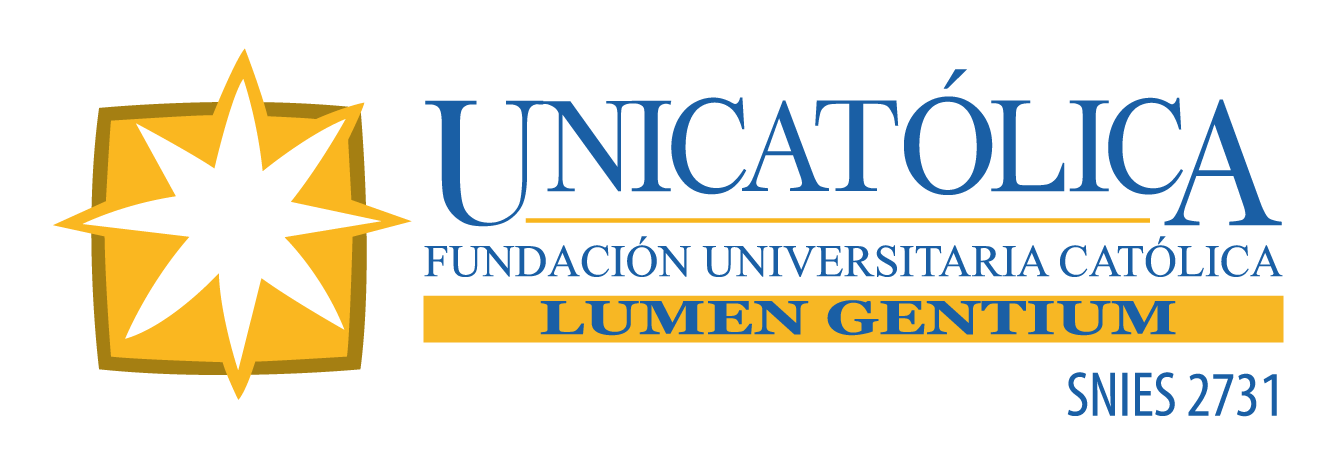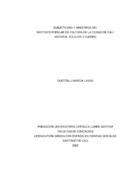Mostrar el registro sencillo del ítem
Subjetividad y maestros del instituto popular de cultura de la ciudad de Cali: Historia, folclor y cuerpo
| dc.contributor.advisor | Chiquito Tapasco, Magister Rubely | |
| dc.creator | García Lasso, Quetzalli | |
| dc.date.accessioned | 2021-10-27T15:35:34Z | |
| dc.date.available | 2021-10-27T15:35:34Z | |
| dc.date.created | 2020 | |
| dc.identifier.uri | http://hdl.handle.net/20.500.12237/2220 | |
| dc.description | La danza tradicional de una comunidad deja de ser desconocida para el resto del país y del mundo, desde el momento que se le dio un lugar al bailarín folclórico, como aquella persona capaz de interpretar con su cuerpo, los saberes propios de una cultura a la que, puede incluso no pertenecer y, aun así, puede interpretar, representar y darle vida a través de la danza en múltiples escenarios, espacios y territorios, por lejanos que estos sean. Esta figura de peregrino convierte al bailarín en un portavoz, que trasciende límites geográficos, con el propósito de rescatar y avivar tradiciones populares para que no se pierdan en la memoria del olvido. Conocer las motivaciones que surgen para decidir representar el folclor colombiano desde el arte danzario, en un sentido que no se limite a lo estético, permite identificar razones que llevan a sus participantes a asumir este rol, donde el contexto, la cultura y la historia, son un punto de partida para comprender de qué manera, un saber tradicional impacta el proyecto de vida de aquellas personas que encuentran en el folclor su modo de existir. Así mismo, el significado del cuerpo como medio de expresión y su relación con la educación, se convierten en referentes para la construcción de la subjetividad de un bailarín de folclor, que surge a partir de experiencias y saberes que le significan. Este trabajo estudia cómo se configura la subjetividad en un bailarín de folclor colombiano, que ejerce la docencia en el Instituto Popular de Cultura (IPC), siendo este un espacio académico de largo recorrido salvaguardando saberes populares de Colombia en la ciudad de Cali | spa |
| dc.description.abstract | The traditional dance of a community will no longer be unknown to the rest of the country and the world. From the moment that the folk dancer was given a place as the person with the ability to interpret with his body, typical knowledge of a culture that does not belong to him and still represent it. This pilgrim figure turns the dancer into a spokesperson, who transcends geographical limits, with the purpose of rescuing and stoking popular traditions so that they are not lost in the memory of oblivion. The motivations to represent Colombian folklore from art danzario, are no limited to the aesthetic point of view; these allows the identification of different reasons that lead the participants to assume their role; where the context, culture, and history are a starting point to understand how traditional knowledge impacts the life project of those people who find themselves in folklore as a way of existing. Likewise, the meaning of the body as a way of expression and its relationship with education, become references for the construction of the subjectivity of a dancer of folklore, which arises from experiences and knowledge that mean it. This work studies how subjectivity is configured in a Colombian folk dancer, who teaches at the Popular Institute of Culture; this being a long-standing academic spacem safeguarding popular knowledge of Colombia in the city of Cali. | spa |
| dc.format.mimetype | application/pdf | spa |
| dc.subject | Folclor colombiano | spa |
| dc.subject | Cultura, historia y cuerpo | spa |
| dc.title | Subjetividad y maestros del instituto popular de cultura de la ciudad de Cali: Historia, folclor y cuerpo | spa |
| dc.subject.subjectenglish | Colombian folklore | spa |
| dc.subject.subjectenglish | Culture, history, and body | spa |
| dc.rights.accessRights | info:eu-repo/semantics/openAccess | spa |
| dc.creator.degree | Licenciatura con énfasis en ciencias sociales | spa |

